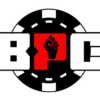Bankroll management is a critical success factor in any form of poker, but even more so in tournaments due to the natural swings (variance) of the game. This will depend on the buy-in level at which you play and your profitability. But even a winning SNG player will experience a downswing of 20+ buy-ins once every 500 games! This doesn’t mean it will happen but certainly, means it can, so you need to be prepared. For new players, a 20 buy-in downswing can feel hard to believe but always remember that you will experience the good side of variance too!
So how can you protect against these big swings? The answer is to ensure you have a big enough bankroll! We recommend that the minimum requirement is 50 buy-ins for the level at which you play. Others suggest that a 100 buy-in bankroll. Either way, you need to be prepared to move up AND down limits according to your bankroll rules. Below is what a 50 buy-in bankroll should look like for the various levels.
BANKROLLS FOR DIFFERENT FORMATS
With so many SNG variations around these days, you need to be able to adjust your bankroll management to suit the variability of your results depending on what you play. Here are a few examples:
- Hyper/Turbos: these games are fast and crazy! Swings will be bigger so doubling your bankroll requirements is best.
- Double or Nothings: More players get paid and strategy is fairly simple, so bankroll guidelines can be reduced a bit.
- Knockouts: You find more recreational players but bounties do balance the increased variance. Bankroll requirements should be about the same.
- Steps: You will encounter a lot of small losses and only the occasional big win. Since wins are scarce, we recommend that you increase your bankroll significantly.
- Multi-Table: Bigger wins for 1st but a lot of finishes out of the money. We advise standard bankroll practices for 2-table games, a little bigger for 45 player SNGs and 90-180 SNGs but as much as 100 buy-ins for large field MTTs.
WHEN TO MOVE UP LEVELS
Good bankroll discipline can provide you with an indicator of when to move up SNG levels. The 50 buy-in rule means that the bankroll required for the next level is easy to assess. If you experience a negative run at the higher level then it becomes easy to drop back down and rebuild before taking another shot.I am a fan of taking the occasional shot, which will move you up earlier and give you a chance of making it big before life’s other demands take over – you can do this easily in SNGs when you win a few buy-ins for the next level up. As long as you have the discipline not to chase losses, you’ll put yourself in a great position to go on a tear!
WANT TO REVIEW PREVIOUS LESSONS?
If you’re just jumping into this 60-Minute Master series for SNGs or would like to review what you’ve learned so far, here are the links to all previous lessons. If you have questions or comments, please feel free to do so in the comments section below.



